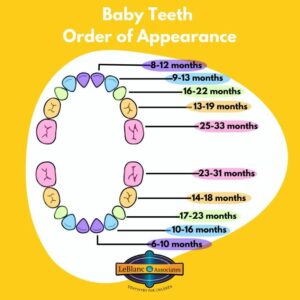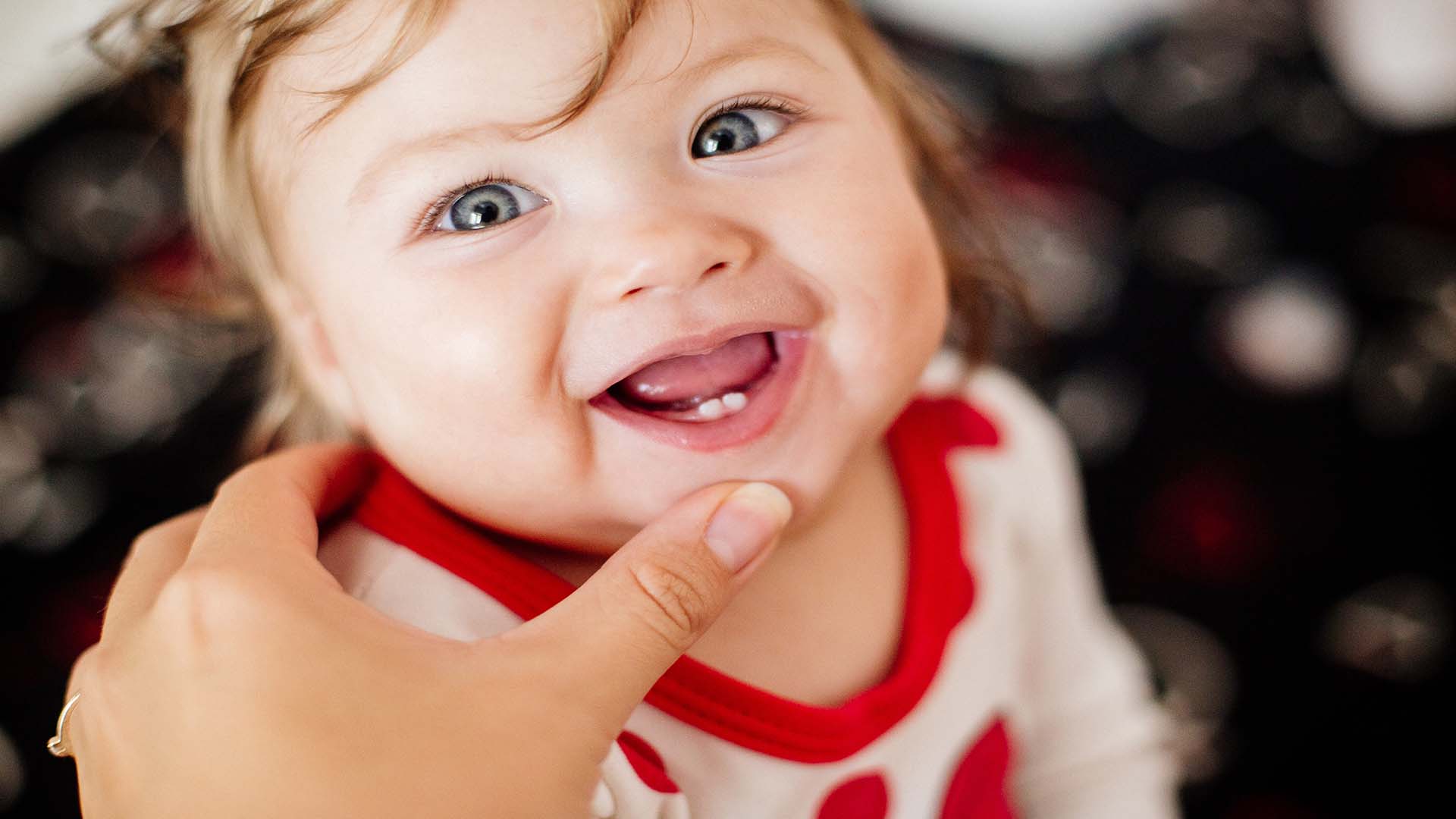A baby comes with many heart-warming firsts. Among those firsts is the occasion of baby’s first tooth. Knowing what to expect during this time is especially important for both your baby’s comfort and your confidence as a parent. In this blog we will share how to know when babies start teething, infant tooth order, when to expect your infant’s first tooth, and how to care for your little one’s new smile.
In What Order Do the Baby’s Teeth Come In?

Many of us have an adorably infamous first tooth photo. But what is the order in which baby teeth grow? The first set are called incisors and commonly make their first debut between 6 and 10 months. Baby’s primary set is usually at the bottom, followed by the top two. The first two sets, top and bottom, are called the central incisors. The pair that grow on the outside of the central incisors are called the lateral incisors and come shortly after.
The first molars, canine teeth, and second molars are the following sets that arrive between the age of 16 months and three years old. These sets, top and bottom, total 12 teeth, thus adding more character and beauty to your baby’s smile.
What Are the Signs of Teething?
Understanding teething symptoms can be very useful in calculating when your baby’s teeth will start to show. Here are a few of the most common signs of teething:
- Irritability – This is one of the earliest signs of teething. When your little one starts showing signs of discomfort it is usually because of pressure and pain that accompanies new teeth breaking through. Teething symptoms like swollen gums and changes in sleeping patterns can be major factors in your baby’s temperament.
- Drooling – Saliva glands are stimulated during the teething process, which causes quite a bit of drooling. You may notice an increase in bib changes and your baby’s clothes getting wet around the neck area during this time. Be sure to keep burping clothes handy.
- Changes in Appetite – Don’t be surprised if your baby is not interested in munching down on too much. Swollen, tender gums may cause your baby to eat slowly, or less than usual. The best way to combat this is to provide soft, cool foods like apple sauce or mashed frozen strawberries to nourish and provide soothing to your baby’s gums. Giving your baby a cool teething ring or teething toy can also help soothe sore gums.
- Low-Grade Fever – Low-grade fevers are a natural response to the new teeth breaking through your baby’s gums. Although a fever is considered a part of the teething process it can easily bring alarm to new parents. These fevers range from 99 degrees and 100.4 degrees Fahrenheit. Fortunately, teething fevers do not last for extended periods and are easy to break. It is best to pay close attention to this range to rule out any other illnesses if the fever increases.
How to Care for Your Baby’s New Teeth
Once your baby has teeth showing it is time to start their journey of great oral health. It is best to start the process early so the child can become familiar with patterns of great oral hygiene. Actions like rubbing your baby’s teeth with a warm washcloth after meals are a great kickstart to a healthy oral care journey. Consider introducing a soft toothbrush specifically designed for infants. Begin monitoring your baby’s diet as the food your baby consumes will play a huge role in their oral and dental health. As your little one approaches their first birthday, it is also imperative to schedule your first dental visit.
Schedule an Appointment with LeBlanc and Associates
The joyous occasion of your baby’s first teeth showing should be handled with love and care. We hope you will consider these guidelines when looking after your baby’s growing smile. Start your baby’s journey with LeBlanc and Associates Dentistry for Children by booking your baby’s first dental appointment today
